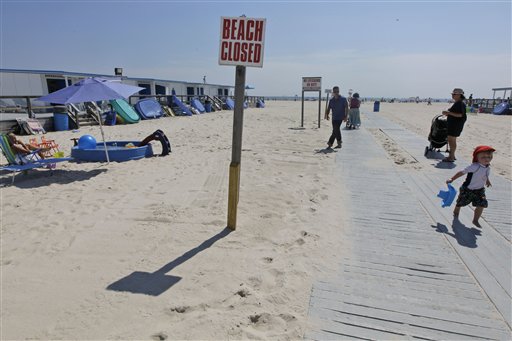
As Hurricane Irene roars toward the East Coast — home to some of the country’s most densely populated cities and costliest waterfront real estate — experts are forecasting a multibillion-dollar disaster.
Hurricane Irene is expected to make landfall in North Carolina as a Category 2 storm early Saturday, then move up the Eastern Seaboard, where more than 50 million people from the Carolinas to Massachusetts could be in the path of heavy rain and tropical-force winds. The economic impact of the hurricane largely will depend on factors that include the storm’s size, where it makes landfall, and the speed at which it’s moving when it hits the coast. But experts already are forecasting billions of dollars in losses.
“It’s probably going to be very damaging,” said Roger Pielke, a University of Colorado professor and fellow of the Cooperative Institute for Research in Environmental Sciences.
A computer model of Irene’s potential impact puts the estimated damage at $4.7 billion, according to research by Pielke and catastrophe-insurance provider ICAT. That figure, which came from analyzing 27 comparable storms dating back to 1913, includes destruction of homes, cars, public infrastructure and other property caused by high winds and flooding. The number doesn’t factor in the added impact of lost sales from shuttered restaurants, quiet casinos, canceled flights and boarded-up stores — all of which could add billions of dollars to the fallout.
Statistician Nate Silver, who crunched the data for his New York Times blog, puts the worst-case estimate at $35 billion — half of New York City’s annual budget — if Irene were to pass directly over Manhattan with 100 mile-per-hour winds. While the odds of a direct hit on the city are slim, a Category 2 storm passing within 50 miles of downtown would cause $10 billion in damage, according to Silver’s model.
Some are drawing comparisons to the New England Hurricane of 1938, nicknamed “The Long Island Express,” which packed 100-mile-per-hour winds when it made landfall in New York and destroyed 8,900 homes across southern New England. Were the same storm to occur today, it would cause $46.2 billion in property damage, according to ICAT, because the coastal regions it hit are now home to many more businesses and expensive homes.
“Everybody wants to live by the ocean,” says Chris Hackett, director of personal lines policy at the Property Casualty Insurers Association of America, who notes that as much as two-thirds of the New York’s insured property value is along the coast.
On the less-severe side of ICAT’s Irene model are East Coast storms that wreaked less havoc. In 1985, Gloria resulted in $2.5 billion in damage (adjusted to 2011) after it made landfall on Long Island as a Category 1 storm with 85-mile-per-hour winds. Hurricane Belle, which hit New York in 1976, caused just $570 million in damage, despite 90-mile-per-hour winds.
The impact is expected to be significant for the nation as a whole because the major metro areas that will be affected, including New York City, Philadelphia, Boston, Baltimore and Washington, account for 16 percent of national economic output and 14 percent of total employment, according to Moody’s economist Ryan Sweet.
“If damage is severe and disrupts production for several days, there will be a noticeable impact on the national economy for August,” says Sweet. But he expects any lost output to be made up in subsequent months as construction firms go to work rebuilding and consumers replace damaged property, so he isn’t revising his quarterly GDP growth estimate of 1.5 percent annualized.
“Of course, that could all change after this weekend,” he says.
—–
AP economics reporter Chris Rugaber in Washington contributed to this report.
Copyright 2011 The Associated Press.
































